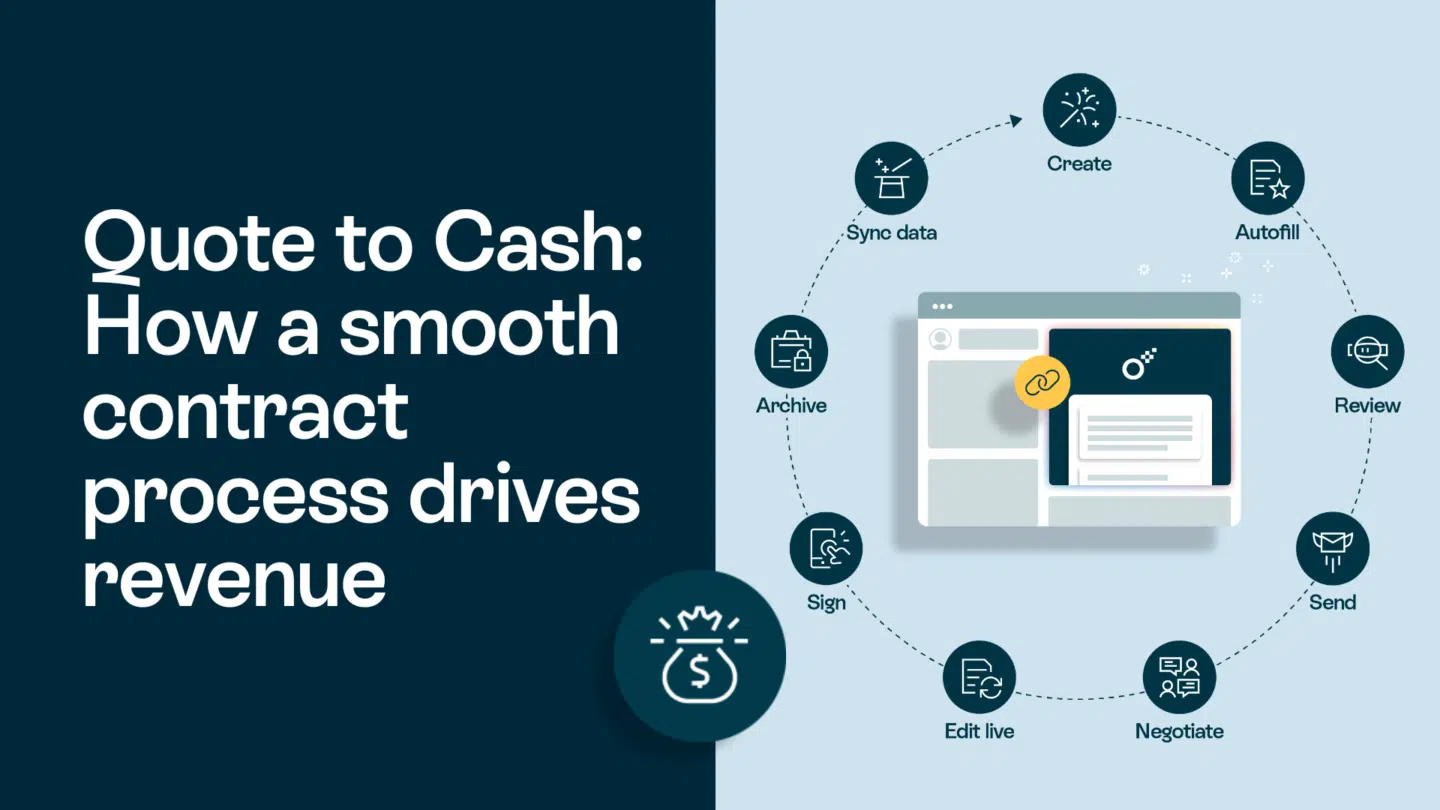We can all agree that contracts serve as the backbone of commercial relationships, defining the obligations, rights, and responsibilities of the parties involved. However, contracts also expose businesses to a range of risks if not managed properly, from financial losses to reputational damage and legal liabilities.
Effective contract risk management is essential for mitigating these risks and ensuring that business operations run smoothly. This article explores what contract risk management entails, provides examples of common contract risks, discusses the concept of a risk matrix for contracts, and outlines best practices to keep your business safe.
1. What is contract risk management?
Contract risk management means you identify, analyze, and mitigate potential risks that can come with contractual agreements. These risks can arise at any stage of the contract lifecycle, from negotiation and drafting to execution and termination. The goal of contract risk management is to minimize the potential for disputes, breaches, and losses, while ensuring that all parties fulfill their contractual obligations.
Contracts are legally binding documents that outline the terms and conditions of business relationships. They cover a wide range of aspects, including pricing, delivery schedules, payment terms, warranties, and dispute resolution mechanisms. However, the complexity and diversity of contractual agreements also mean that they can be a source of significant risk. For instance, poorly drafted contracts may contain ambiguous language that leads to differing interpretations, while a failure to comply with regulatory requirements could result in legal penalties.
Effective contract risk management requires a proactive approach. It involves not only identifying potential risks but also implementing measures to mitigate them. This may include conducting due diligence on the other party, drafting clear and comprehensive contract terms, and regularly reviewing contracts to ensure they remain up-to-date with current laws and business needs. By managing contract risks effectively, businesses can protect themselves from financial losses, legal disputes, and reputational damage, while also ensuring that they meet their contractual obligations.
Read also: Contract management software: A complete guide

2. What is an example of a contract risk?
Contract risks can take many forms, depending on the nature of the agreement and the parties involved. One common example is the risk of non-compliance with regulatory requirements. This risk is particularly relevant in international contracts, where businesses must navigate different legal and regulatory frameworks. For instance, a company may enter into a contract with a supplier in another country without fully understanding the local labor laws or environmental regulations. If the supplier fails to comply with these regulations, the company could be held liable, facing fines, legal action, and damage to its reputation.
Another example of a contract risk is late delivery or non-performance by a vendor. In a supply chain contract, for example, a business may rely on a vendor to deliver critical components on time. If the vendor fails to meet the agreed-upon delivery schedule, the business could experience production delays, lost sales, and dissatisfied customers. In some cases, the business may also face penalties for failing to fulfill its own contractual obligations to customers.
Financial risks are also common in contracts, particularly those involving long-term agreements. For instance, a contract with a fixed price over several years might expose a company to financial losses if market conditions change and the cost of goods or services increases. Similarly, contracts that involve variable pricing based on market rates can lead to unpredictable costs, making it difficult for businesses to manage their budgets effectively.
In addition to all of this, contractual ambiguities can pose a risk. Ambiguous language in a contract can lead to disputes over the interpretation of terms, potentially resulting in costly litigation. For example, if a contract does not clearly define what constitutes “timely delivery,” the parties may have different expectations, leading to disagreements and potential breaches.
These examples highlight the importance of thorough contract risk management. By identifying and addressing potential risks early on, businesses can avoid costly disputes and ensure that their contracts support, rather than hinder, their strategic objectives.
3. What is the risk matrix for contracts?
A risk matrix is a powerful tool used in contract risk management to assess and prioritize risks. It provides a visual representation of the likelihood and impact of different risks, helping businesses determine which risks require the most attention and resources. The matrix typically consists of two axes:
- Likelihood: This axis represents the probability that a risk will occur. It is usually divided into categories such as rare, unlikely, possible, likely, and almost certain.
- Impact: This axis represents the potential consequences of a risk if it does occur. The impact can range from minor, with little effect on the business, to critical, with severe financial, operational, or reputational damage.
By plotting risks on the matrix, businesses can categorize them into different levels of priority. For instance, a risk that is both highly likely and has a critical impact would be classified as a high-priority risk that requires immediate attention and mitigation. On the other hand, a risk that is unlikely and has a minor impact might be considered low priority and managed with less urgency.
The risk matrix is not a one-size-fits-all tool; it can be customized to suit the specific needs and risk appetite of the business. Some organizations may choose to use more detailed categories for likelihood and impact, while others may prefer a simpler matrix. The key is to ensure that the matrix provides a clear and accurate representation of the risks associated with the contract, allowing the business to make informed decisions about risk management.
For example, in a contract with a critical supplier, a company might identify the risk of supply chain disruption as a highly likely and high-impact risk. This risk would be placed in the top right corner of the matrix, indicating that it is a top priority for mitigation. The company might then decide to diversify its supplier base, negotiate penalties for late delivery, or invest in inventory buffers to reduce the impact of any potential disruptions.
The risk matrix is also a dynamic tool that should be updated regularly as new risks emerge and existing risks evolve. By regularly reviewing and updating the matrix, businesses can ensure that their contract risk management strategies remain effective and responsive to changing circumstances.
Read also: AI contract management: What you need to know

4. Six best practices to keep your business safe
To effectively manage contract risks and protect your business, it is essential to adopt best practices that address the various stages of the contract lifecycle. Here are six key practices to consider:
1. Conduct thorough due diligence
Before entering into any contract, it is crucial to perform comprehensive due diligence on the other party. This process involves evaluating their financial stability, legal standing, and compliance history. By conducting thorough due diligence, you can identify potential risks early on and make informed decisions about whether to proceed with the contract. This step is particularly important in international contracts, where differences in legal and regulatory frameworks can create significant risks.
2. Clearly define roles and responsibilities
Ambiguities in roles and responsibilities are a common source of contract disputes. To avoid misunderstandings and ensure that all parties are on the same page, it is essential to clearly define the roles, responsibilities, and expectations of each party in the contract. This includes specifying who is responsible for what, the deadlines for deliverables, and the criteria for performance evaluation. By providing clear and detailed descriptions, you can reduce the risk of disputes and ensure that the contract is executed smoothly.
3. Include clear terms and conditions
Contracts should be drafted with clear and unambiguous language that covers all critical aspects of the agreement. This includes payment terms, delivery schedules, performance standards, warranties, and dispute resolution mechanisms. Avoid vague or open-ended clauses that could lead to conflicting interpretations. It is also advisable to include contingency provisions that address potential risks, such as force majeure clauses that allow for contract adjustments in the event of unforeseen circumstances.
4. Implement a contract management system
A contract management system is a valuable tool for centralizing and managing all contracts within an organization. These systems allow you to track key dates, such as renewal deadlines and expiration dates, monitor compliance with contractual obligations, and ensure that all parties are meeting their responsibilities. By using a contract management system, you can improve efficiency, reduce the risk of oversight, and ensure that contracts are managed effectively throughout their lifecycle.
5. Regularly review and update contracts
Contracts are not static documents; they should be regularly reviewed and updated to ensure they remain aligned with current laws, regulations, and business objectives. Changes in the business environment, such as new regulations or shifts in market conditions, may necessitate revisions to contract terms. Regular reviews also provide an opportunity to identify any potential risks that may have emerged since the contract was signed. By keeping contracts up-to-date, you can ensure that they continue to serve the best interests of your business.
6. Establish a risk mitigation plan
A risk mitigation plan is an essential component of contract risk management. This plan should outline the steps you will take to address identified risks, including contingency measures for potential contract breaches. For example, you might establish alternative suppliers in case of vendor non-performance, or include penalty clauses for late delivery to incentivize timely performance. A well-developed risk mitigation plan can help you manage risks proactively and ensure that your business is prepared to respond to any challenges that arise.
The key takeaways
In an increasingly complex and interconnected business world, managing contract risks is not just an operational necessity but a strategic imperative. Contracts, while essential for formalizing business relationships, inherently carry risks that, if not properly managed, can lead to financial losses, legal disputes, and damage to a company’s reputation. Effective contract risk management requires a comprehensive approach that includes thorough due diligence, clear and precise contract terms, regular reviews, and the use of tools like risk matrices to prioritize and address potential issues.
By implementing best practices in contract risk management, businesses can not only protect themselves from the downsides of contractual relationships but also leverage contracts to enhance their operational efficiency and achieve strategic objectives. The ability to manage contract risks effectively ensures that businesses can navigate the complexities of contractual agreements with confidence, fostering stronger, more reliable partnerships and ultimately contributing to long-term success.







